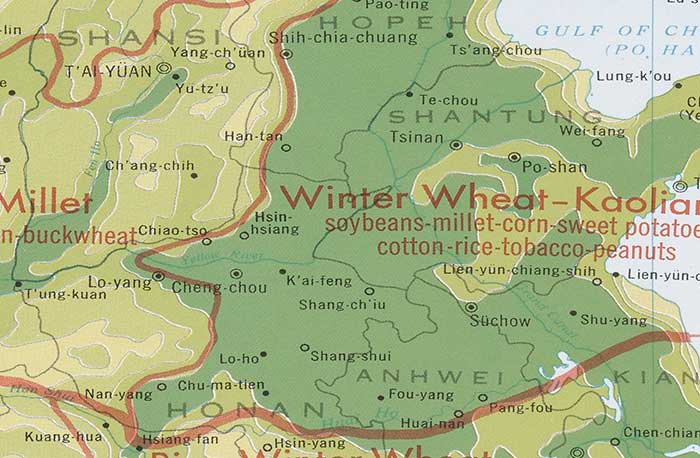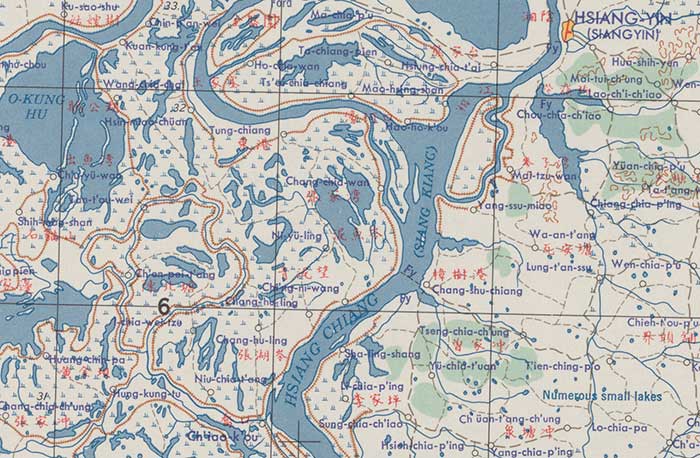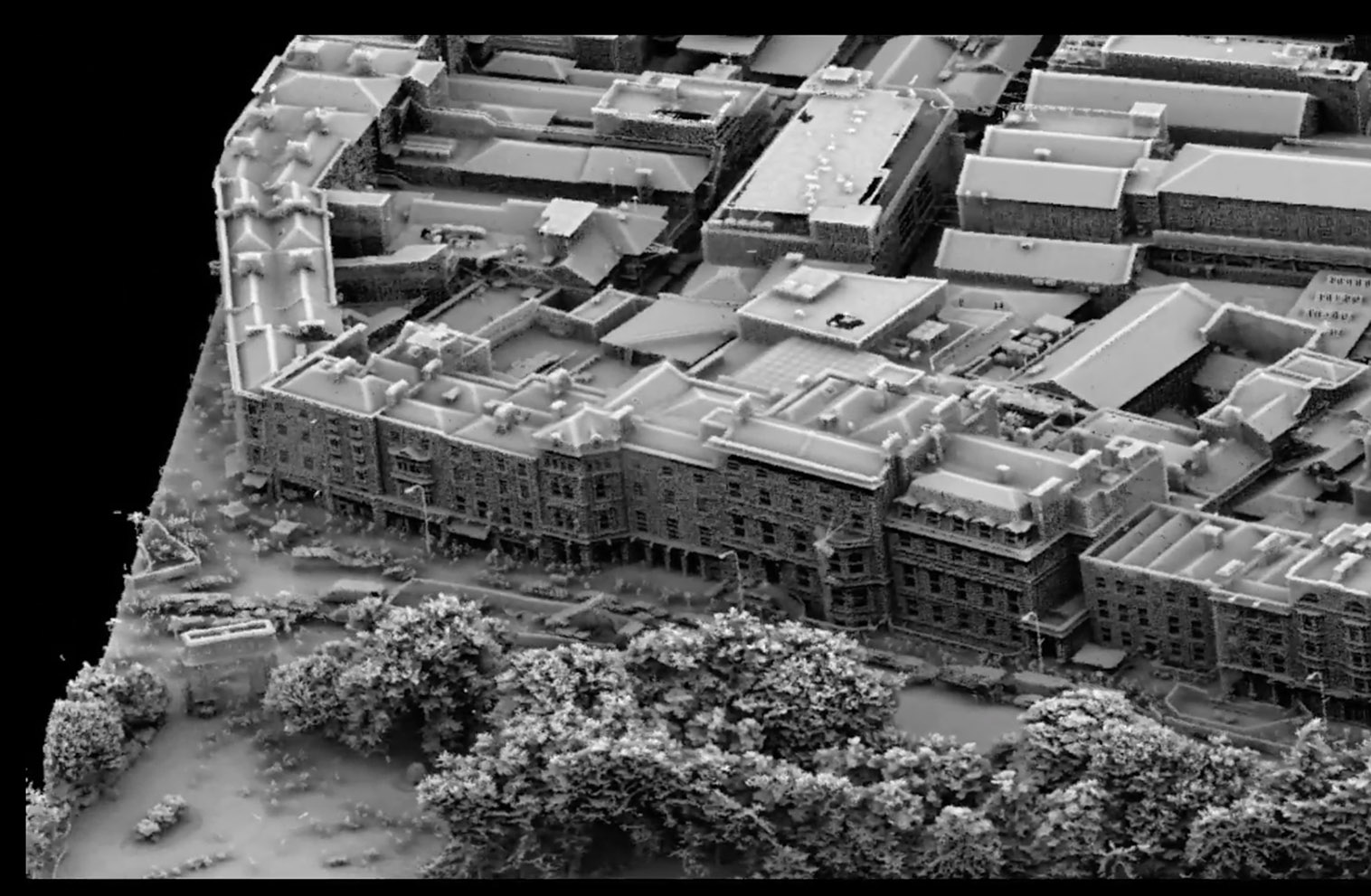View Metadata
United States Hazardous Material Routes, 2013
- Identification Information
- Data Quality Information
- Spatial Data Organization Information
- Spatial Reference Information
- Entity and Attribute Information
- Distribution Information
- Metadata Reference Information
- Identification Information
- Citation
- Originator
- United States. Bureau of Transportation Statistics
- Originator
- United States. Federal Motor Carrier Safety Administration.
- Originator
- United States. Department of Transportation. Research and Innovative Technology Administration
- Publication Date
- 2012
- Title
- United States Hazardous Material Routes, 2013
- Edition
- 2005 Preliminary Edition
- Geospatial Data Presentation Form
- vector digital data
- Collection Title
- National Transportation Atlas Databases (NTAD) 2013
- Series Information
- Series Name
- FMCSA Hazardous Material Routes
- Issue Identification
- None at time of this release.
- Publication Information
- Publication Place
- 1200 New Jersey Ave. SE, Washington, DC, 20590
- Publisher
- Research and Innovative Technology Administration/Bureau of Transportation Statistics
- Online Linkage
- http://www.columbia.edu/acis/eds/gis/images/ntad_2013_hazmat.zip
- Abstract
- The Federal Motor Carrier Safety Administration (FMCSA) Hazardous Material Routes were developed using the 2004 First Edition TIGER/Line files. The routes are described in the National Hazardous Material Route Registry (NMHRR). The on-line NMHRR linkage is http://hazmat.fmcsa.dot.gov/nhmrr/index.asp With the exception of 13 features that were not identified with the Tiger/Lines, Hazmat routes were created by extracting the TIGER/Line segments that corresponded to each individual route. Hazmat routes in the NTAD, are organized into 3 database files, hazmat.shp, hmroutes.dbf, and hmstcnty.dbf. Each record in each database represents a unique Tiger/Line segment. These Tiger/Line segments are grouped into routes identified as character strings in the ROUTE_ID field in the hmroutes.dbf table. The route name appearing in the ROUTE_ID is assigned by FMCSA and is unique for each State [this sentence could be deleted - it doesn't add a lot to it]. The hmstcnty.dbf table allows the user to select routes by State and County. A single shapefile, called hazmat.shp, represents geometry for all routes in the United States.
- Purpose
- In order for the public to be able to view the Hazardous Material Routes reported to FMCSA, the data is being released in ESRI shapefile format for use in a GIS system.
- Supplemental Information
- The data provided is in the native Latitude/Longitude coordinate system inherited from the TIGER/Line data.
- Temporal Extent
- Currentness Reference
- Unknown
- Time Instant
- 2012
- Bounding Box
- West
- -124.216232
- East
- -71.051495
- North
- 49.000758
- South
- 26.111954
- Theme Keyword
- Boundaries
- Theme Keyword Thesaurus
- ISO 19115 Topic Categories
- Theme Keyword
- FWTRANSPORTATION
- FWROADS
- FWGOVERNMENTALUNITS
- Theme Keyword Thesaurus
- FGDC Framework Themes
- Theme Keyword
- Vector
- Feature Identifier
- TIGER/Line Identification Number (TLID)
- Census Feature Class Code (CFCC)
- Latitude/Longitude
- TIGER/Line
- Point/Node
- Hazardous Material Route
- Line Feature
- FMCSA
- Theme Keyword Thesaurus
- None
- Place Keyword
- United States
- Place Keyword Thesaurus
- Library of Congress Subject Headings
- Temporal Keyword
- 2007
- 2010
- 2011
- 2009
- 2008
- 2006
- 2012
- 2013
- Temporal Keyword Thesaurus
- None
- Access Restrictions
- None
- Use Restrictions
- None
- Point of Contact
- Contact Organization
- Hazardous Material Routes:U.S. Department of Transportation Volpe NTSC TIGER/Line:U.S. Department of Commerce, U.S. Census Bureau, Geography Division
- Point of Contact
- Contact Organization
- Research and Innovative Technology Administration's Bureau of Transportation Statistics (RITA/BTS)
- Point of Contact
- Contact Organization
- Federal Motor Carrier Safety Administration
- Delivery Point
- 1200 New Jersey Ave. SE
- City
- Washington
- State
- DC
- Postal Code
- 20590
- Country
- US
- Contact Telephone
- 202-366-5011
- Contact Electronic Mail Address
- david.miller@dot.gov
- Native Data Set Environment
- Microsoft Windows 7 Version 6.1 (Build 7601) Service Pack 1; Esri ArcGIS 10.1.0.3035
- Collection
- Originator
- Research and Innovative Technology Administration's Bureau of Transportation Statistics (RITA/BTS)
- Publication Date
- 20120724
- Title
- National Transportation Atlas Databases (NTAD) 2013
- Geospatial Data Presentation Form
- vector digital data
- Online Linkage
- http://www.bts.gov/programs/geographic_information_services/
- Cross-Reference
- Originator
- Research and Innovative Technology Administration's Bureau of Transportation Statistics (RITA/BTS)
- Publication Date
- 20120724
- Title
- National Transportation Atlas Databases (NTAD) 2013
- Geospatial Data Presentation Form
- vector digital data
- Publication Information
- Publication Place
- Washington, DC
- Publisher
- Research and Innovative Technology Administration's Bureau of Transportation Statistics (RITA/BTS)
- Online Linkage
- http://www.bts.gov/programs/geographic_information_services/
- Data Quality Information
- Attribute Accuracy Report
- Inherited TIGER/Line attributes are accurate against Federal Information Processing Standards (FIPS), FIPS Publication 6-4, and FIPS-55 at the 100% level for the codes and base names. The remaining attribute information has been examined but has not been fully tested for accuracy.
- Logical Consistency Report
- Route consistency is being reviewed at this time. Network consistency is inherited from TIGER/Line: The feature network of lines (as represented by Record Types 1 and 2) is complete for census purposes. Spatial objects in TIGER/Line belong to the "Geometry and Topology" (GT) class of objects in the "Spatial Data Transfer Standard" (SDTS) FIPS Publication 173 and are topologically valid. Node/geometry and topology GT-polygon/chain relationships are collected or generated to satisfy topological edit requirements. These requirements include: (1) Complete chains must begin and end at nodes. (2) Complete chains must connect to each other at nodes. (3) Complete chains do not extend through nodes. (4) Left and right GT-polygons are defined for each complete chain element and are consistent throughout the extract process. (5) The chains representing the limits of the files are free of gaps. The Census Bureau performed automated tests to ensure logical consistency and limits of files. All polygons are tested for closure. The Census Bureau uses its internally developed Geographic Update System to enhance and modify spatial and attribute data in the Census TIGER database. Standard geographic codes, such as FIPS codes for states, counties, municipalities, and places, are used when encoding spatial entities. The Census Bureau performed spatial data tests for logical consistency of the codes during the compilation of the original Census TIGER database files. Most of the codes themselves were provided to the Census Bureau by the USGS, the agency responsible for maintaining FIPS 55. Feature attribute information has been examined but has not been fully tested for consistency.
- Completeness Report
- Of the 904 routes reported, 897 have been created.
- Horizontal Positional Accuracy Report
- Accuracy is inherited from the TIGER/Line files: The Census Bureau uses Global Positioning System (GPS) coordinates at road centerline intersections to evaluate the horizontal spatial accuracy of source files that may be used to realign road features in the TIGER database and test the horizontal spatial accuracy of the road features in the TIGER/Line files. The test compares a survey-grade GPS coordinate to its associated road centerline intersection in the TIGER file. The test is based upon an independent collection of GPS coordinates for a random sample of road intersections from a centerline file that meet certain criteria. The points are referred to as the sample points and are gathered through a private contractor working for the Census Bureau. Since the collection method uses survey-quality GPS-based field techniques, the resulting control points are considered "ground truth" against which the TIGER road centerline intersection coordinates are compared. The distances between the coordinates are calculated and the Census Bureau determines the Circular Error 95% (CE95). That is, the accuracy of the file in meters with 95% confidence. The CE95 can be calculated from the mean and standard deviation by using the formula: mean of differences plus (2.65 times the standard deviation). CE95 results reported for each file tested are determined using a spreadsheet with embedded statistical formula. The use and applicability of the spreadsheet and its embedded formula have been verified by Census Bureau statisticians. The basis of the calculation is the use of the root mean square error (RSME). This is the method as stated in the U.S. Government's Federal Geographic Data Committee Standard FGDC-STD-007.3-1998, Geospatial Positioning Accuracy Standards. Part 3: National Standard for Spatial Data Accuracy. The results of using this measure of accuracy are in compliance with Federal Spatial Data requirements. In terms of the Census Bureau application, the dataset coordinate values are those taken from the centerline file and the coordinate values from an independent source of higher accuracy are those acquired through the Census Bureau's contractor. Refer to the 2004 First Edition TIGER/Line metadata for each county or statistically equivalent entity for information on the spatial accuracy of features in that county. Please note that the horizontal spatial accuracy, where reported, refers only to the realigned road features identified as matched to the positionally accurate source file with that accuracy. It is not the spatial accuracy of the TIGER/Line file as a whole.
- Lineage
- Source
- Originator
- Hazardous Material Routes:U.S. Department of Transportation Volpe NTSC TIGER/Line:U.S. Department of Commerce, U.S. Census Bureau, Geography Division
- Publication Date
- unpublished material
- Title
- National Hazardous Material Routes
- Publication Information
- Publication Place
- Washington, DC
- Publisher
- Research and Innovative Technology Administration's Bureau of Transportation Statistics (RITA/BTS)
- Type of Source Media
- CD-ROM
- Source Temporal Extent
- Time Period Information
- Single Date/Time
- Calendar Date
- 20120101
- Source Currentness Reference
- publication date
- Contribution
- Geographic and cartographic information (line segments) selected from the Census TIGER/Line database.
- Spatial Data Organization Information
- Indirect Spatial Reference Method
- Federal Information Processing Standards (FIPS) and feature names.
- Direct Spatial Reference Method
- Vector
- Point and Vector Object Information
- SDTS Terms Description
- SDTS Point and Vector Object Type
- String
- Point and Vector Object Count
- 145005
- Spatial Reference Information
- Horizontal Coordinate System Definition
- Geographic
- Latitude Resolution
- 8.983152841195215e-009
- Longitude Resolution
- 8.983152841195215e-009
- Geographic Coordinate Units
- Decimal Degrees
- Geodetic Model
- Horizontal Datum Name
- D WGS 1984
- Ellipsoid Name
- WGS 1984
- Semi-major Axis
- 6378137.0
- Denominator of Flattening Ratio
- 298.257223563
- Entity and Attribute Information
- Entity Type
- Entity Type Label
- hazmat
- Entity Type Definition
- FMCSA Hazardous Material Routes in GIS Format
- Entity Type Definition Source
- Federal Motor Carrier Safety Administration
- Attributes
- FID
- System generated primary key; a unique identification number for the feature (Sequential unique whole numbers that are automatically generated.)
- Definition Source
- ESRI
- Shape
- Internal Arcview Generated Attribute (Coordinates defining the features.)
- Definition Source
- ArcView
- TLID
- The Tiger Line Identification number (0 to 212556923)
- Definition Source
- Census TIGER/Line
- FEDIRP
- Feature direction prefix
- N
- North
- NE
- North East
- NW
- North West
- E
- East
- S
- South
- SE
- South East
- SW
- South West
- W
- West
- Definition Source
- Census TIGER/Line
- FENAME
- Feature name (Character Value)
- Definition Source
- Census TIGER/Line
- FETYPE
- Feature Type (Character Value)
- Definition Source
- Census TIGER/Line
- FEDIRS
- Feature Direction Code
- E
- East
- N
- North
- NE
- North East
- NW
- North West
- S
- South
- SE
- South East
- SW
- South West
- W
- West
- Definition Source
- Census TIGER/Line
- CFCC
- Census Feature Class Code (Census Feature Class CodeUSBOC)
- Definition Source
- Census TIGER/Line
- PK
- Primary Key (Numeric Value)
- Definition Source
- RITA/BTS
- Entity and Attribute Overview
- Hazardous Material Route files contain data describing Line Features. The data/attributes describing the lines include coordinates, feature identifiers (route id and route type), CFCCs (inherited from TIGER/Line and used to identify the TIGER/Line characteristic of a feature) and secondary feature name (Street name: inherited from TIGER/Line) The hazmat table stores the basic spatial data for the Hazardous Materials information. The hmroutes tables stores the routing information and the hmstcnty table holds the state and county information. All of the data are not stored in a single table because it is inefficient. To integrate the hmroutes table with the hazmat table you must create a relationship between the two. This relationship is defined by hazmat's PK field and the hmroute's FK field. More specifically for each PK value in the hazmat table there are one or more FK values in the hmroutes table. To integrate the hmstcnty table with the hazmat table you must create a relationship between the two. This relationship is defined by hazmat's PK field and the hmstcnty's FK field. More specifically for each PK value in the hazmat table there are one or more FK values in the hmstcnty table. For information on how to create a relationship between tables search for the term "relate" in the help file of your GIS application.
- Entity and Attribute Detail Citation
- hmstcnty OID - The primary key and a unique identification number for the record FK - The foreign key. This field is used to link this table and the related features of the hazmat table StFIPS - The State FIPS code for the related feature CntyFIPS - the county FIPS code for the related feature
- Entity and Attribute Detail Citation
- hmroutes OID - The primary key and a unique identification number for the record FK - The foreign key. This field is used to link this table and the related features of the hazmat table. STATEABBR - Abbreviation of the state in which the related hazmat feature occurs ROUTE_ID - The original route identification code presented by Highways. It's a concatenation of the State Abbreviation, the Route Type and the Route Number. STATEABBR - The two letter state abbreviation ROUTE_TYPE - The route type of the related hazmat feature ROUTENUM - the route number of the related Hazmat feature.
- Distribution Information
- Distributor
- Research and Innovative Technology Administration's Bureau of Transportation Statistics (RITA/BTS)
- Name
- Metadata Reference Information
- Metadata Date
- 20140925
- Metadata Contact
- Contact Information
- Contact Organization Primary
- Contact Organization
- Research Data Services (RDS), Columbia University Libraries
- Contact Person
- GIS/Metadata Librarian
- Contact Address
- Address
- 420 W. 118th St., 215 IAB, MC 3301
- City
- New York
- State or Province
- NY
- Postal Code
- 10027
- Country
- USA
- Contact Voice Telephone
- (212)854-6012
- Contact Electronic Mail Address
- data@library.columbia.edu
- Metadata Standard Name
- FGDC Content Standard for Digital Geospatial Metadata
- Metadata Standard Version
- FGDC-STD-001-1998


